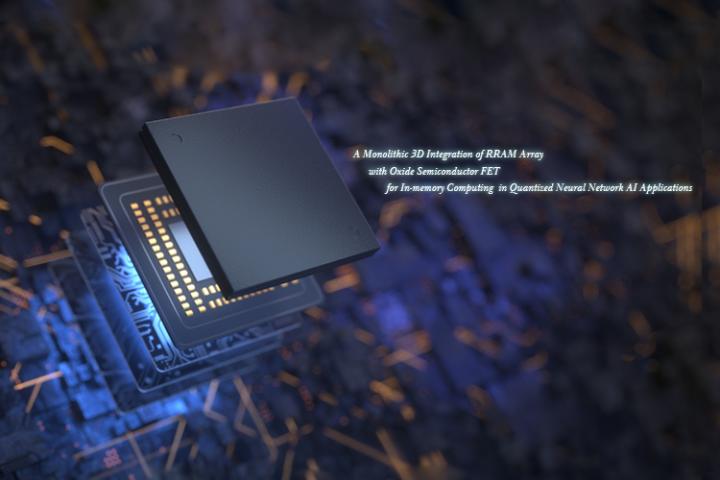Circular reasoning: Spiraling circuits for more efficient AI

Researchers from The University of Tokyo create a new integrated 3D-circuit architecture for AI applications with spiraling stacks of memory modules, which may help lead to specialized machine-learning hardware that uses much less electricity Credit: Institute of Industrial Science, The University of Tokyo
Machine learning is a type of AI that allows computers to be trained by example data to make predictions for new instances. For example, a smart speaker algorithm like Alexa can learn to understand your voice commands, so it can understand you even when you ask for something for the first time.
However, AI tends to require a great deal of electrical energy to train, which raises concerns about adding to climate change.
Now, scientists from the Institute of Industrial Science at The University of Tokyo have developed a novel design for stacking resistive random-access memory modules with oxide semiconductor (IGZO) access transistor in a three-dimensional spiral.
Having on-chip nonvolatile memory placed close to the processors makes the machine learning training process much faster and more energy efficient. This is because electrical signals have a much shorter distance to travel compared with conventional computer hardware. Stacking multiple layers of circuits is a natural step, since training the algorithm often requires many operations to be run in parallel at the same time.
“For these applications, each layer's output is typically connected to the next layer's input. Our architecture greatly reduces the need for interconnecting wiring,” says first author Jixuan Wu.
The team was able to make the device even more energy efficient by implementing a system of binarized neural networks. Instead of allowing the parameters to be any number, they are restricted to be either +1 or -1.
This both greatly simplifies the hardware used, as well as compressing the amount of data that must be stored. They tested the device using a common task in AI, interpreting a database of handwritten digits. The scientists showed that increasing the size of each circuit layer could enhance the accuracy of the algorithm, up to a maximum of around 90%.
“In order to keep energy consumption low as AI becomes increasingly integrated into daily life, we need more specialized hardware to handle these tasks efficiently,” explains Senior author Masaharu Kobayashi.
This work is an important step towards the “internet of things,” in which many small AI-enabled appliances communicate as part of an integrated “smart-home.”
###
About Institute of Industrial Science (IIS), the University of Tokyo
Institute of Industrial Science (IIS), the University of Tokyo is one of the largest university-attached research institutes in Japan.
More than 120 research laboratories, each headed by a faculty member, comprise IIS, with more than 1,000 members including approximately 300 staff and 700 students actively engaged in education and research. Our activities cover almost all the areas of engineering disciplines. Since its foundation in 1949, IIS has worked to bridge the huge gaps that exist between academic disciplines and real-world applications.
Media Contact
More Information:
https://www.iis.u-tokyo.ac.jp/en/news/3311/All latest news from the category: Information Technology
Here you can find a summary of innovations in the fields of information and data processing and up-to-date developments on IT equipment and hardware.
This area covers topics such as IT services, IT architectures, IT management and telecommunications.
Newest articles

A new puzzle piece for string theory research
Dr. Ksenia Fedosova from the Cluster of Excellence Mathematics Münster, along with an international research team, has proven a conjecture in string theory that physicists had proposed regarding certain equations….

Climate change can cause stress in herring larvae
The occurrence of multiple stressors undermines the acclimatisation strategies of juvenile herring: If larvae are exposed to several stress factors at the same time, their ability to respond to these…

Making high-yielding rice affordable and sustainable
Plant biologists show how two genes work together to trigger embryo formation in rice. Rice is a staple food crop for more than half the world’s population, but most farmers…



